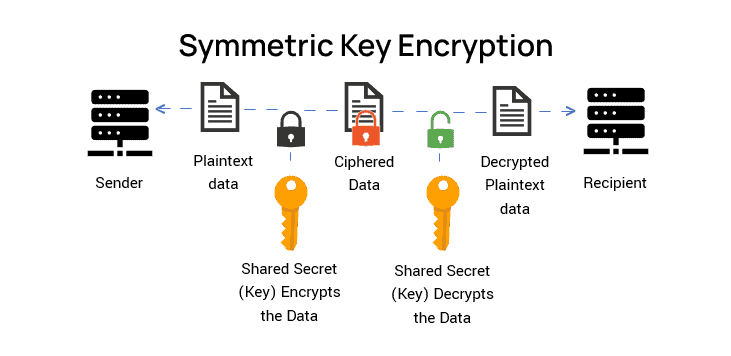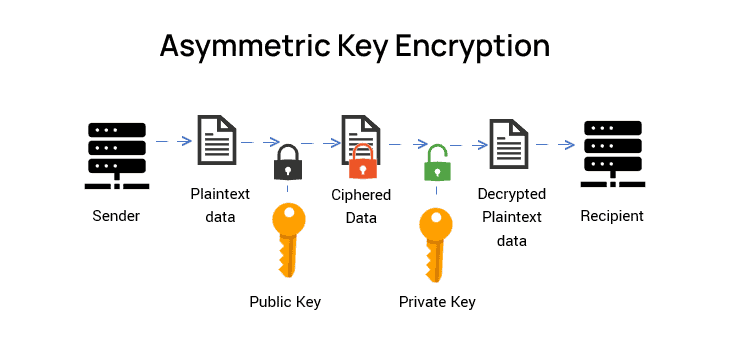In this article you’ll learn about what is Symmetric and Asymmetric Key Encryption along with this learn about difference between them.
Symmetric Key Encryption
Encryption is a process to change the form of any message in order to protect it from reading by anyone. In Symmetric-key encryption the message is encrypted by using a key and the same key is used to decrypt the message which makes it easy to use but less secure. It also requires a safe method to transfer the key from one party to another.

Asymmetric Key Encryption
Asymmetric Key Encryption is based on public and private key encryption technique. It uses two different key to encrypt and decrypt the message. It is more secure than symmetric key encryption technique but is much slower.

| Symmetric Key Encryption | Asymmetric Key Encryption |
|---|---|
| It only requires a single key for both encryption and decryption. | It requires two key one to encrypt and the other one to decrypt. |
| The size of cipher text is same or smaller than the original plain text. | The size of cipher text is same or larger than the original plain text. |
| The encryption process is very fast. | The encryption process is slow. |
| It is used when a large amount of data is required to transfer. | It is used to transfer small amount of data. |
| It only provides confidentiality. | It provides confidentiality, authenticity and non-repudiation. |
| Examples: 3DES, AES, DES and RC4 | Examples: Diffie-Hellman, ECC, El Gamal, DSA and RSA |
| In symmetric key encryption, resource utilization is low as compared to asymmetric key encryption. | In asymmetric key encryption, resource utilization is high. |